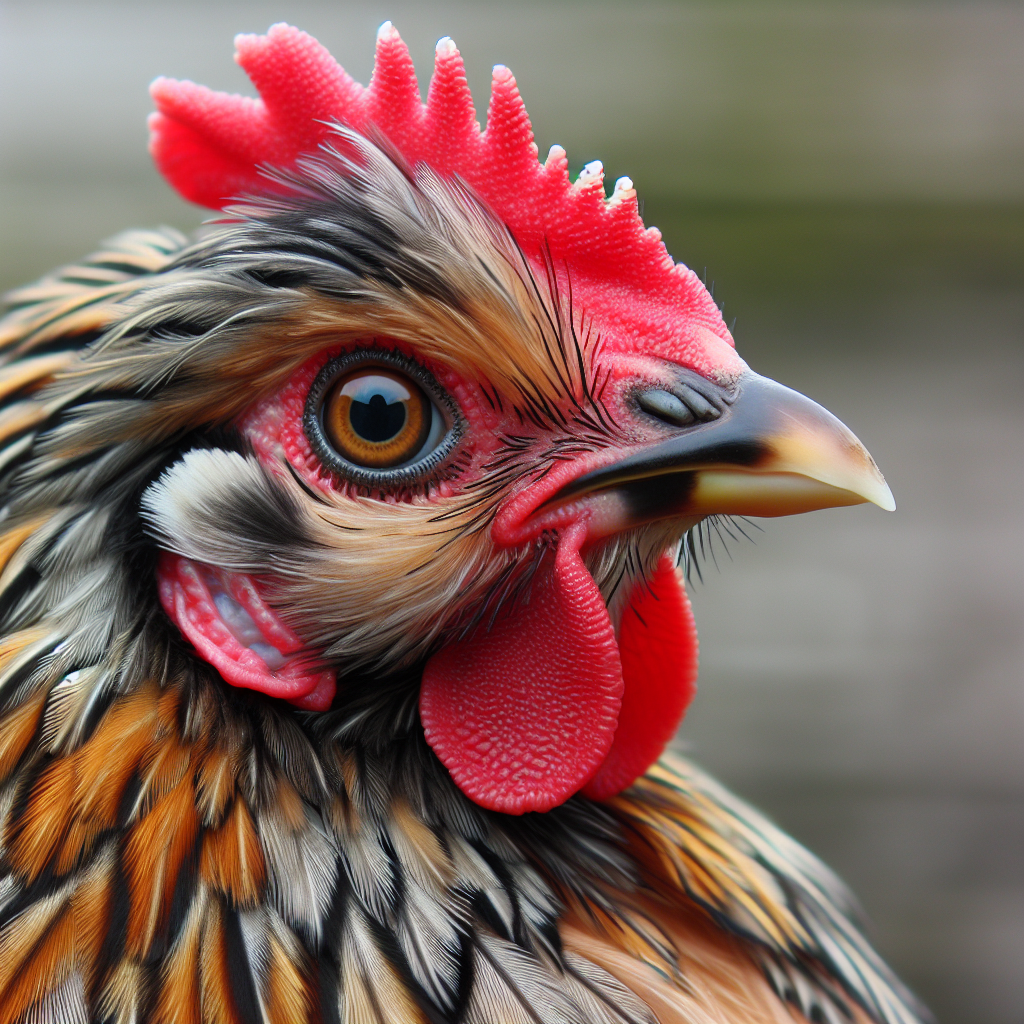Are you curious about how to seamlessly introduce hybrid chickens into a diverse flock? Look no further, because in this article, we will explore the best practices for integrating hybrid chickens into a pre-existing flock without any complications. By following these simple yet effective tips, you’ll be able to bring these unique feathered friends into your diverse flock and create a harmonious environment for all your chickens to thrive.
Understanding Hybrid Chickens
Hybrid chickens are crossbred birds that are specifically bred for certain desirable traits. These chickens are the result of crossing two different breeds, often combining the strengths of both breeds to create a hybrid that excels in certain areas. The goal of breeding hybrid chickens is to produce birds that are highly productive, whether it be in terms of egg-laying ability, meat production, or other desirable traits.
What are Hybrid Chickens?
Hybrid chickens are bred by mating two different chicken breeds with distinct characteristics. The resulting offspring inherit traits from both parent breeds, resulting in chickens that exhibit a combination of desirable traits from both breeds. These traits vary depending on the specific breeds being crossed, but can include increased egg-laying ability, larger size, improved feed conversion rates, or better disease resistance.
Benefits of Raising Hybrid Chickens
There are several benefits to raising hybrid chickens. One of the main advantages is their increased productivity. Hybrid chickens are typically bred to be highly efficient in converting feed into either eggs or meat, making them more cost-effective for small-scale chicken keepers. Additionally, these chickens often have a higher egg-laying capacity than purebred chickens, producing more eggs per year.
Another benefit of raising hybrid chickens is their improved disease resistance. The crossbreeding process can result in offspring that are more resilient to common chicken diseases, reducing the risk of illness and mortality within the flock. This can save the poultry keeper from potential losses and the need for excessive medical interventions.
Hybrid chickens also tend to have a more docile and friendly temperament compared to some purebred chickens. This can make them easier to handle and interact with, especially for those who want to keep chickens as pets or for educational purposes. Their calm nature can also help in integrating them into existing flocks more smoothly.
Evaluating Your Existing Flock
Before introducing hybrid chickens to your existing flock, it is important to evaluate the characteristics of your current chickens. This will help you assess the compatibility between your existing flock and the hybrid chickens you plan to introduce.
Assessing Your Existing Flock’s Characteristics
Take note of the size, age, and breed composition of your current flock. Determine their individual behavior and temperament. Assess their health and production performance, noting any potential weaknesses or issues. Understanding the dynamics of your existing flock is crucial in ensuring a successful integration with the hybrid chickens.
Considering Space and Resources
Evaluate the space available in your coop and the resources you have for your existing flock. Hybrid chickens may have different space and nutritional requirements compared to your current chickens, so it’s important to ensure that you can provide adequate space, nesting areas, roosting space, and sufficient food and water for all the chickens in your flock.
Examining Behavioral Compatibility
Observe the social dynamics within your existing flock and identify any aggressive or territorial behaviors. Some chickens may be more dominant or territorial than others, and introducing new chickens can disrupt the existing pecking order. It’s important to consider the temperament of your existing flock and how they may react to the addition of hybrid chickens.
Preparing for Integration
Integration of hybrid chickens into an existing flock requires careful preparation to minimize potential conflicts and stress for both the new and existing chickens.
Quarantining New Chickens
Before introducing hybrid chickens to your existing flock, it is crucial to quarantine them for a period of time. This helps to prevent the spread of any potential diseases or parasites that the new chickens may be carrying. Quarantine the new chickens in a separate area away from your existing flock for at least two weeks, monitoring their health closely during this time.
Separating Territories
Once the new chickens have completed their quarantine period, it is recommended to establish separate territories within the existing coop or run for a smoother integration. This can be done using dividing panels or temporary fencing to create separate spaces for the new and existing chickens. This allows them to become familiar with each other’s presence without direct contact.
Introducing Through Fencing
After the separate territories have been established, it’s time to introduce the hybrid chickens to the existing flock. Start by allowing them to see each other through the temporary fencing. This allows the chickens to become accustomed to each other’s presence gradually. Over time, you can gradually remove sections of the fencing to allow supervised face-to-face interactions between the chickens.
Introducing the Hybrid Chickens
The actual introduction of the hybrid chickens to the existing flock should be done gradually and under supervision to minimize conflicts and ensure a smoother integration.
Supervised Face-to-Face Interaction
Once the chickens have become familiar with each other’s presence through the fencing, it’s time to allow supervised face-to-face interaction. Keep a close eye on the chickens during this time and be prepared to intervene if any aggressive behavior occurs. Supervised interactions allow the chickens to establish their social hierarchy and pecking order.
Monitoring Aggression and Dominance
During the integration process, it is important to monitor the behavior of the chickens closely. Some level of aggression and pecking order establishment is normal, but excessive aggression or bullying should be addressed immediately. Watch for any signs of distress or injury and be prepared to separate any chickens that are being excessively targeted.
Providing Sufficient Food and Water
Ensure that there is ample food and water available for all the chickens in the flock. Dominant chickens may monopolize the resources, leading to hungry or dehydrated chickens. Consider providing multiple feeding and watering stations to avoid conflicts and ensure that all the chickens have equal access to food and water.
Addressing Social Dynamics
Integrating hybrid chickens into an existing flock can present some challenges in terms of establishing a new social hierarchy. It’s important to address these dynamics to ensure the well-being of all the chickens in the flock.
Possible Challenges
Introducing new chickens to an existing flock can lead to social upheaval and increased aggression. Some existing chickens may become territorial and try to establish dominance over the new arrivals. This can result in bullying, pecking, and injury to the new chickens. It’s important to recognize and address these challenges early on to prevent prolonged conflicts.
Strategies for Establishing a Pecking Order
The establishment of a new pecking order is a natural process when introducing new chickens to an existing flock. Although it can be unsettling to witness, it is necessary for the chickens to establish a hierarchy. Provide multiple feeding and watering stations to reduce competition and ensure that all the chickens have access to resources. This can help minimize aggression during the establishment of the pecking order.
Identifying and Managing Bullying
Bullying can occur when introducing new chickens to an existing flock, resulting in physical injuries and unnecessary stress. To manage bullying, closely monitor the behavior of the chickens and intervene if necessary. Remove any excessively aggressive chickens or provide additional hiding spots or visual barriers to protect the more vulnerable chickens. If the bullying persists, it may be necessary to separate the bully from the flock.
Managing Health and Disease
Maintaining good health within the flock is essential for the well-being of all the chickens, including the newly introduced hybrids.
Monitoring for Signs of Illness
Regularly monitor the health of all the chickens in the flock, including the newly introduced hybrid chickens. Look out for signs of illness such as lethargy, loss of appetite, abnormal droppings, or respiratory symptoms. If any signs of illness are observed, isolate the affected chicken immediately and seek veterinary advice if needed.
Implementing Preventive Measures
To minimize the risk of disease transmission within the flock, implement preventive measures such as regular cleaning and sanitizing of the coop and equipment. Practice good biosecurity by washing hands before and after handling the chickens, and limit contact with other flocks to reduce the risk of disease introduction.
Isolating Sick or Injured Birds
If any of the chickens in the flock become sick or injured, it is important to isolate them from the rest of the flock to prevent further spread of illness or additional injuries. Provide a separate area for the sick or injured bird to rest and recover, and seek professional veterinary care if necessary.
Maintaining a Balanced Environment
Maintaining a balanced and clean environment is crucial for the well-being and harmonious coexistence of the hybrid chickens and existing flock.
Optimizing Space and Nesting Areas
Ensure that the coop and run provide sufficient space for all the chickens in the flock. Consider the overall size of the flock and provide enough roosting space, nesting areas, and perches for everyone. Overcrowding can lead to increased stress and aggression.
Ensuring Sufficient Roosting Space
Chickens need enough roosting space to rest comfortably during the night. Provide multiple roosting options at different heights to accommodate the preferences and pecking order of the chickens. Avoid overcrowding on a single roost to minimize conflicts and encourage a more balanced environment.
Regular Cleaning and Sanitizing
Regular cleaning of the coop, run, and surrounding areas is essential to prevent the build-up of waste, bacteria, and parasites that can compromise the health of the chickens. Remove soiled bedding regularly, sanitize surfaces, and provide fresh bedding to maintain a clean and hygienic environment for the birds.
Promoting Integration and Bonding
Promoting integration and bonding among the hybrid chickens and existing flock members can help create a harmonious and thriving flock.
Encouraging Mixed Foraging and Free-Range Activities
Allow the hybrid chickens and existing flock members to forage and explore together. Participating in free-range activities can help them bond and establish a sense of familiarity and unity. Monitor them during the activities to ensure compatibility and minimize conflicts.
Providing Environmental Enrichment
Provide environmental enrichment within the coop and run to keep the chickens mentally stimulated and engaged. This can include perches, toys, and treats that encourage natural behaviors and keep the chickens active and happy. Environmental enrichment can also help divert attention from potential conflicts and reduce stress.
Observe and Intervene Only When Necessary
While it’s important to closely monitor the integration process, it’s equally important to allow the chickens to sort out their own social dynamics to some extent. Intervene only when necessary, such as when aggression becomes excessive or when there are signs of distress or injury. Giving the chickens the opportunity to establish their own pecking order can lead to a more stable and balanced flock.
Observing Long-Term Compatibility
Observing the long-term compatibility of the hybrid chickens and existing flock members is crucial to ensure the well-being and productivity of the entire flock.
Monitoring the Overall Welfare of Flock
Regularly assess the overall welfare of the entire flock, including the hybrid chickens and existing flock members. Pay attention to their behavior, health, and production performance. Address any issues promptly to maintain a harmonious and healthy flock.
Considering Genetic Variability
Consider the genetic variability of the flock over time. The introduction of hybrid chickens can contribute to genetic diversity within the flock, which may have long-term benefits in terms of overall health and productivity. Be mindful of maintaining a good balance between maintaining existing breeds and introducing new genetics.
Evaluating Egg Production and Health
Monitor the egg production and health of the hybrid chickens and the existing flock members. Evaluate whether the hybrid chickens are meeting their expected productivity levels and if the overall health of the flock has improved or remained stable. This assessment can help inform future breeding decisions and flock management strategies.
Conclusion
Successfully integrating hybrid chickens into a diverse flock requires careful planning, observation, and management. By evaluating your existing flock, preparing for integration, and addressing social dynamics, you can promote a harmonious and productive flock. Through monitoring and managing health, maintaining a balanced environment, and promoting integration, you can enjoy the benefits of a diverse and harmonious flock. Remember to adapt strategies to the specific needs and characteristics of your individual flock, and enjoy the rewards of raising hybrid chickens.




